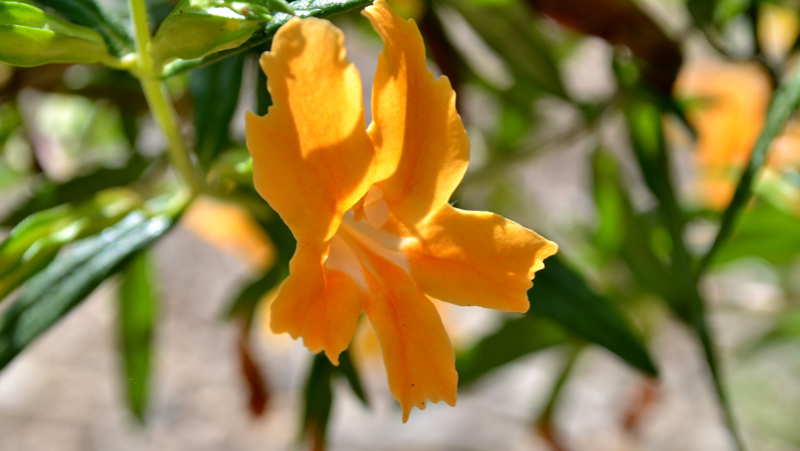As much as you might want to order a Sticky Monkeyflower from your favorite mixologist, you won’t have luck. To get something with this fun of a name, you’ll have to head to your favorite California native plant nursery (try Theodore Payne Foundation or Rancho Santa Ana Botanic Garden’s Grow Native Nursery).
Monkeys may not be native to California, but Sticky Monkeyflower, or Bush Monkeyflower (Mimulus aurantiacus and cultivars), is. This evergreen shrub grows to be 2–3’ tall and 2–3’ wide. They bloom from spring through summer with trumpet-shaped flowers. The many cultivars and hybrids have colors ranging from orange and yellow to pink and red.
Hummingbirds are attracted to Monkeyflower and the plant is a food source for the caterpillars of the Common Buckeye butterfly. Like all California natives, these plants require no water at all if we have received enough winter rain. That’s right, it needs little or no supplemental water (once a month in a drought year).
In a year like this one, when Los Angeles rainfall totals measure, in some places, less than one third of seasonal norms, it makes sense to stick some Sticky Monkeyflowers into your garden and save some water—while still enjoying a blooming landscape.
The hummingbirds and butterflies will thank you for serving one of their favorite drinks!
Photo: Donnella Anderson

